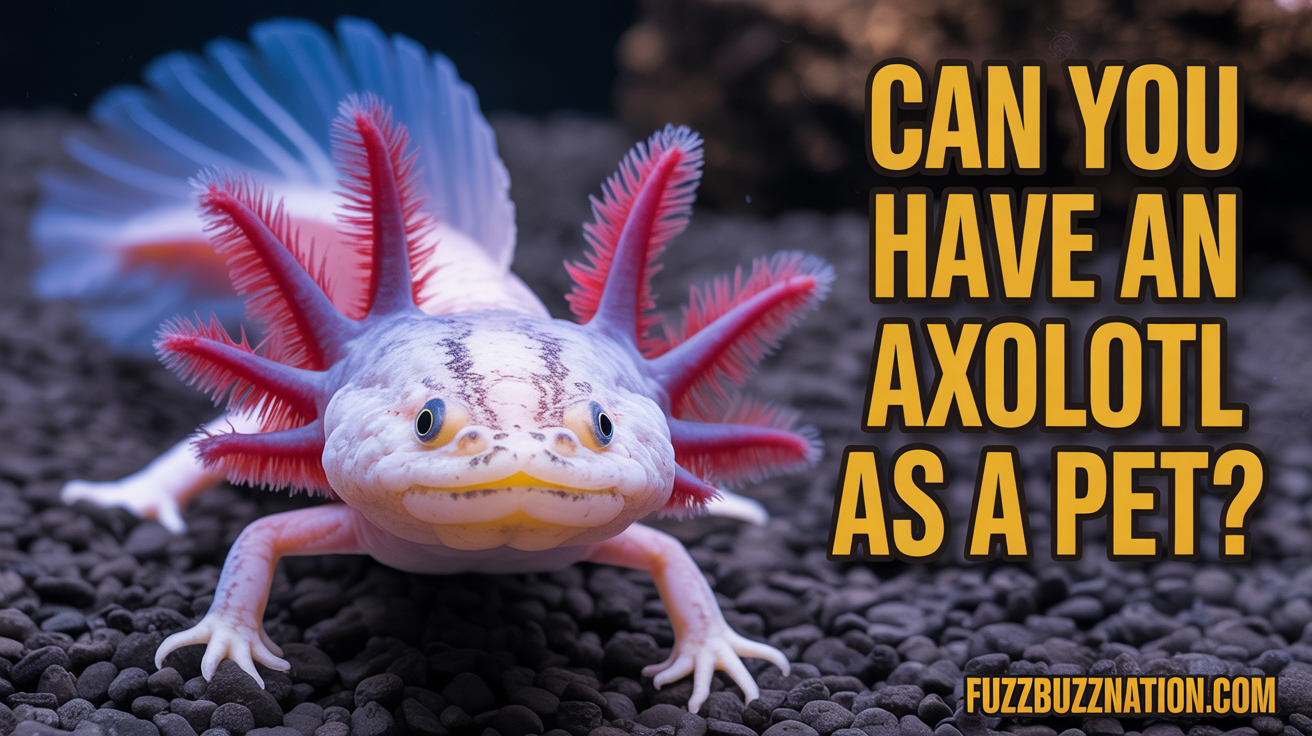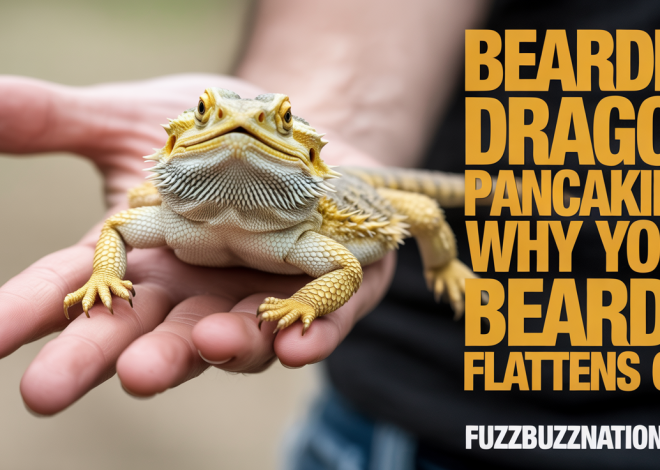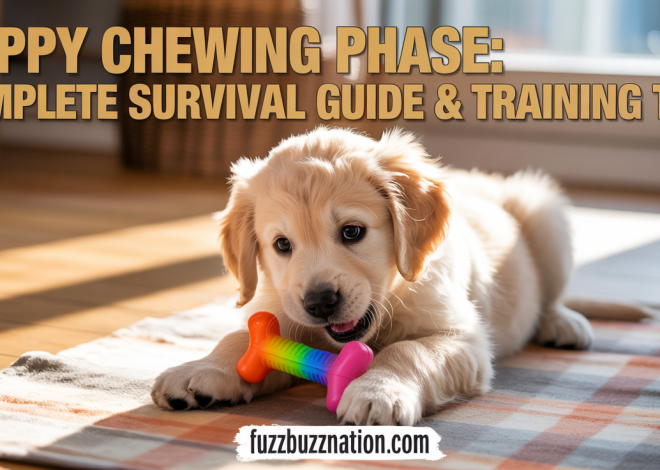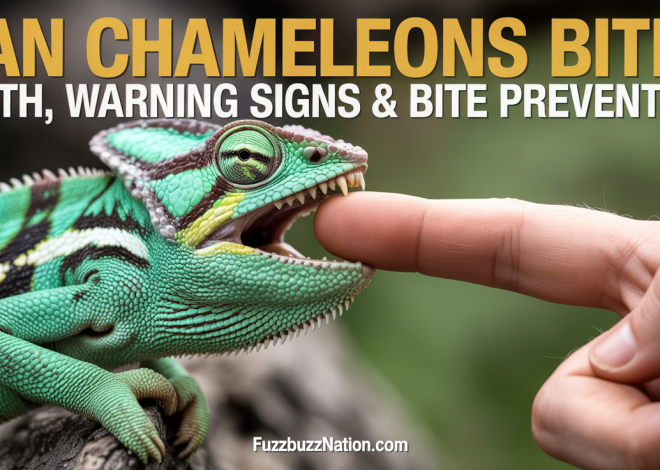
Can You Have an Axolotl as a Pet? Complete Ownership Guide
Yes, you can legally keep axolotls as pets in most U.S. states and many countries, though they require specialized aquatic care including cool water temperatures of 60-64°F, fully cycled aquarium systems, and careful handling due to their delicate permeable skin. After maintaining axolotl colonies for over nine years and successfully breeding multiple generations, I’ve learned that while these fascinating salamanders make rewarding pets for dedicated aquatic enthusiasts, they demand more precise environmental control and understanding than typical aquarium fish or common reptile pets.
The key to successful axolotl ownership lies in understanding their unique biology as neotenic salamanders that remain aquatic throughout their lives, recognizing the legal restrictions that exist in certain locations, and committing to the specific water quality and temperature requirements that determine their health and longevity.
Legal Status and Ownership Restrictions
Axolotl ownership remains completely legal in most U.S. states, though notable exceptions include California, Maine, New Jersey, and Virginia where possession is prohibited due to invasive species concerns or wildlife protection regulations.
During my years working with axolotl enthusiasts, I’ve observed increasing interest in these unique amphibians, making it essential for potential owners to verify current local regulations before purchasing animals or equipment.
California’s ban stems from concerns that escaped or released axolotls could establish populations in natural waterways, potentially competing with native salamander species or disrupting local ecosystems.
Canada permits axolotl ownership in most provinces, though British Columbia maintains restrictions requiring permits for possession, highlighting the importance of checking provincial regulations before acquisition.
European countries generally allow axolotl ownership with minimal restrictions, though some nations require registration or limit numbers that individuals can keep without special permits.
Import and export regulations under CITES (Convention on International Trade in Endangered Species) don’t currently restrict axolotl trade, as captive-bred animals are widely available and don’t threaten wild populations.
City and county ordinances may impose additional restrictions beyond state or national regulations, requiring potential owners to verify rules at all jurisdictional levels before committing to ownership.
Understanding Axolotl Biology and Behavior
Axolotls (Ambystoma mexicanum) are neotenic salamanders that retain juvenile characteristics throughout their lives, remaining fully aquatic rather than undergoing metamorphosis into terrestrial adults like most salamander species.
These unique amphibians originate from lake systems near Mexico City, though wild populations are critically endangered due to habitat destruction, pollution, and invasive species introduction in their native range.
Adult axolotls typically reach 9-12 inches in length, with females growing slightly larger than males and individuals occasionally exceeding 12 inches under optimal care conditions.
I’ve observed that axolotls display surprisingly complex behaviors including recognizing their owners, responding to feeding schedules, and showing individual personality differences that make them engaging pets.
Natural coloration in wild axolotls appears dark brown or black, while captive breeding has produced various morphs including leucistic (pink with black eyes), albino (golden with pink eyes), and melanoid (solid black) varieties.
Regenerative abilities represent their most remarkable biological feature, as axolotls can regrow entire limbs, portions of their brain, heart tissue, and other organs throughout their lives.
Lifespan potential ranges from 10-15 years with proper care, making axolotls long-term commitments comparable to many traditional pets requiring sustained dedication and resources.
Essential Housing and Tank Requirements
Axolotl housing requires minimum tank sizes of 20 gallons for a single adult, though 29-gallon or larger tanks provide better water quality stability and more swimming space for these active animals.
I maintain my breeding adults in 40-gallon breeder tanks that offer optimal dimensions with more floor space than height, as axolotls spend most time on tank bottoms rather than swimming mid-water.
Tank length matters more than height because axolotls are bottom-dwelling animals that benefit from horizontal swimming space for exercise and territory establishment in multi-axolotl setups.
Filtration systems must provide adequate water cleaning without creating strong currents that stress axolotls, as these animals prefer still or gently moving water matching their natural lake habitat.
Substrate selection remains controversial among axolotl keepers, with options including bare-bottom tanks for easiest maintenance, fine sand that passes safely if ingested, or large river rocks too big to swallow.
I avoid gravel-sized substrates as axolotls may accidentally ingest small stones during feeding, potentially causing dangerous impactions that require veterinary intervention or can prove fatal.
Tank decorations should include hiding spots using caves, PVC pipes, or aquarium-safe structures that provide security without sharp edges that could damage delicate axolotl skin.
Live plants including java ferns, anubias, and marimo moss balls create natural environments while helping maintain water quality, though they must tolerate cool water temperatures.
Critical Water Quality and Temperature Management
Temperature control represents the most challenging aspect of axolotl care, as these cold-water animals require consistent temperatures between 60-64°F, significantly cooler than typical home temperatures.
During my breeding operations, I’ve used various cooling methods including aquarium chillers, room air conditioning, frozen water bottles, and clip-on fans, finding that proper cooling investment prevents stress and health problems.
Summer heat presents particular challenges in warm climates, as temperatures exceeding 75°F for extended periods cause severe stress, appetite loss, disease susceptibility, and potential death in axolotls.
Water chemistry parameters require monitoring and maintenance with pH between 6.5-8.0, ammonia and nitrite at 0 ppm, and nitrates below 20 ppm for optimal health outcomes.
Nitrogen cycle establishment through proper tank cycling before adding axolotls remains essential, requiring 4-6 weeks of beneficial bacteria development to process waste products safely.
I test water parameters weekly using liquid test kits that provide more accurate results than test strips, allowing early problem detection before issues become life-threatening.
Chlorine and chloramine removal from tap water using appropriate water conditioners protects axolotl gills and skin from chemical damage during water changes and tank maintenance.
Water change schedules typically involve 20-30% weekly changes for established tanks, though heavily stocked or smaller tanks may require more frequent maintenance for adequate water quality.
Dietary Requirements and Feeding Guidelines
Axolotls are carnivorous predators requiring protein-based diets including earthworms, bloodworms, brine shrimp, and specially formulated pellets designed for carnivorous aquatic animals.
Earthworms represent the optimal staple food in my experience, providing excellent nutrition, easy digestion, and natural feeding behaviors as axolotls hunt and consume these readily available prey items.
Commercial axolotl pellets offer convenience and balanced nutrition when purchased from reputable manufacturers, though I supplement pellet diets with live or frozen foods for enrichment and variety.
Feeding frequency depends on age, with juveniles requiring daily feeding for rapid growth while adults thrive on feeding every 2-3 days to prevent obesity and water quality degradation.
Portion sizing involves offering amounts the axolotl can consume within 5-10 minutes, removing excess food promptly to prevent water fouling from decomposing uneaten items.
Through years of observation, I’ve noticed individual feeding preferences vary, with some axolotls eagerly accepting pellets while others prefer live prey or require training to accept prepared foods.
Feeding tools including soft-tipped tongs prevent accidental injury during hand-feeding sessions while allowing precise food placement for target feeding training and interaction.
Health Concerns and Common Problems
Fungal infections appear as white cotton-like growths on skin or gills, typically developing from poor water quality, injuries, or stress that compromises the axolotl’s immune system function.
I treat minor fungal infections with salt baths (2-3 teaspoons aquarium salt per gallon for 10-15 minutes daily) or commercial antifungal medications specifically safe for amphibians.
Bacterial infections may cause red, inflamed areas on skin or gills, often requiring antibiotic treatment under veterinary guidance, as untreated infections can spread rapidly and prove fatal.
Temperature stress from water too warm or fluctuating temperatures manifests as decreased appetite, lethargy, floating behavior, or increased gill movement indicating respiratory distress.
Gill deterioration with shortened, whitish, or degraded gill filaments usually results from poor water quality, insufficient oxygen, or chronic temperature stress requiring immediate environmental correction.
Impaction from inappropriate substrate ingestion creates serious digestive blockages causing loss of appetite, floating, and potential death without intervention including fasting and temperature manipulation.
Injuries from tank mates, sharp decorations, or handling heal remarkably well due to regenerative abilities, though maintaining clean water during healing prevents secondary infections.
Handling Guidelines and Interaction
Axolotls require minimal handling as their permeable skin and external gills make them extremely sensitive to chemicals, oils, and bacteria present on human hands and surfaces.
I handle my axolotls only when absolutely necessary for tank maintenance or health inspections, using soft aquarium nets or clean, wet hands to minimize stress and skin damage.
Transfer techniques involve gently herding axolotls into containers rather than lifting them from water, preventing damage to their delicate bodies and external gill structures.
Observation represents the primary interaction method, as axolotls display interesting behaviors including hunting, exploring, and responding to owner presence without requiring physical contact.
Hand-feeding using tongs allows safe interaction and training opportunities where axolotls learn to associate owner presence with positive feeding experiences without handling risks.
Children need supervision around axolotls to prevent inappropriate handling, excessive tapping on glass, or other interactions that stress these sensitive animals.
Compatibility and Social Considerations
Single axolotl housing eliminates risks of fighting, injury, or cannibalism that can occur when housing multiple animals, making solo housing the safest option for beginners.
Multiple axolotls can coexist successfully in adequately sized tanks with all individuals similar in size, though I monitor groups closely for aggression or competitive feeding problems.
Size matching prevents smaller axolotls from being injured or consumed by larger tank mates, as these opportunistic predators may attack or eat smaller companions.
Fish make inappropriate tank mates, as axolotls may eat small fish while larger fish often nip axolotl gills causing injury and stress to these defenseless amphibians.
Gender considerations matter less for compatibility than size matching, though intact males may display breeding behaviors including depositing spermatophores that require removal during cleaning.
During my breeding projects, I’ve observed that well-fed, appropriately housed axolotls rarely show aggression toward similar-sized companions, though territorial disputes occasionally occur.
Cost Considerations for Axolotl Ownership
Initial setup costs typically range from $300-600 including tank, filtration, cooling equipment, substrate, decorations, and water testing supplies necessary for proper axolotl care.
Axolotl purchase prices vary from $20-70 depending on color morph, size, and source, with common colors like leucistic and wild-type costing less than rarer morphs.
I’ve calculated monthly maintenance expenses at approximately $30-50 covering food, electricity for cooling and filtration, water conditioner, and replacement supplies.
Aquarium chiller investment ranges from $200-500 but provides reliable temperature control in warm climates, preventing the ongoing cost and inconvenience of alternative cooling methods.
Veterinary care for exotic pets including axolotls can be expensive and may require specialists, as many general veterinarians lack amphibian treatment experience and appropriate medications.
Breeding Considerations and Ethics
Axolotl breeding occurs naturally when adults are maintained together with appropriate winter cooling periods that stimulate reproductive behavior and spermatophore deposition.
Egg production can involve 100-500 eggs per breeding event, creating overwhelming numbers of offspring requiring individual housing, extensive feeding, and homes or euthanasia decisions.
I strongly discourage casual breeding without plans for offspring placement, as local markets quickly become saturated and many juvenile axolotls cannot find appropriate homes.
Ethical breeding involves understanding genetics to prevent inbreeding depression, maintaining adequate care for all offspring, and ensuring buyers receive proper care information for long-term success.
Culling decisions for deformed or excess offspring present ethical dilemmas that potential breeders should consider seriously before allowing breeding to occur in their care.
Advantages of Axolotl Ownership
Unique appearance and fascinating biology make axolotls captivating pets that spark conversation and provide educational opportunities about amphibian biology and conservation.
Quiet maintenance requirements without noise, odor (when properly maintained), or daily interaction needs suit apartment living and busy schedules better than many traditional pets.
Long lifespans create lasting bonds with individual animals whose personalities develop over years of consistent care and observation in home aquarium environments.
Relatively small space requirements compared to many exotic pets make axolotls feasible for owners with limited housing space who still want engaging animal companions.
Through my ownership experience, I’ve found axolotls provide calming, meditative observation opportunities as they move gracefully through their aquatic environments.
Challenges and Limitations
Temperature control demands in warm climates create ongoing challenges and expenses that may prove unsustainable for owners without reliable cooling solutions or climate-appropriate housing.
Limited veterinary care availability for amphibians means that health emergencies may require extensive travel to specialists or result in limited treatment options affecting outcomes.
Handling restrictions prevent the tactile interaction many people desire from pets, making axolotls better suited for observation than hands-on engagement.
Water quality maintenance requires consistent monitoring and response to parameter changes, demanding more attention than many owners anticipate when considering aquatic pets.
Vacation care presents challenges as axolotls need knowledgeable caretakers who understand temperature requirements, feeding protocols, and emergency responses during owner absences.
Sourcing Responsible Axolotl Acquisition
Reputable breeders provide health histories, proper care information, and ongoing support that pet stores typically cannot offer, making breeder sourcing preferable when possible.
I recommend researching breeders through axolotl forums, exotic pet communities, and amphibian organizations that can verify ethical practices and quality animals.
Pet store axolotls may suffer from inadequate care including improper temperatures, poor nutrition, or disease exposure, though some specialty stores maintain excellent standards.
Online sellers offer convenience and variety but require careful vetting to ensure healthy animals, appropriate shipping methods, and reliable communication about care requirements.
Rescue axolotls occasionally become available through reptile rescues or rehoming situations, providing homes for animals while avoiding supporting questionable breeding operations.
Common Misconceptions About Axolotls
The belief that axolotls are “beginner pets” underestimates their specific care requirements, particularly temperature control that exceeds the complexity of many tropical fish setups.
Some people assume axolotls can survive in bowls or small containers, when these animals require properly sized, filtered, and temperature-controlled aquarium systems for health.
I’ve encountered misconceptions that axolotls are social animals requiring companions, though they’re solitary by nature and often thrive better alone without competition or conflict.
The idea that axolotls can live with fish creates dangerous situations for both species, as compatibility issues result in injured or dead animals.
Claims that axolotls are easy to breed responsibly ignore the challenges of caring for hundreds of offspring and finding appropriate homes for surviving juveniles.
Frequently Asked Questions
Do axolotls need a heater in their tank?
No, axolotls require cool water temperatures of 60-64°F, making heaters unnecessary and potentially dangerous if they malfunction. Most homes are warmer than ideal axolotl temperatures, requiring cooling methods like chillers, air conditioning, or fans rather than heating. Only in unusually cold environments below 60°F would gentle heating be necessary, and even then, careful monitoring prevents overheating. The challenge is keeping water cool enough, not warm enough, in most situations.
Can axolotls live out of water?
No, axolotls are fully aquatic throughout their lives and cannot survive out of water. Unlike most salamanders that undergo metamorphosis to terrestrial forms, axolotls remain aquatic with external gills requiring constant water immersion. Brief periods out of water during tank transfers are acceptable but should be minimized, keeping axolotls moist and returning them to water quickly. They have no ability to breathe air effectively and will die if kept out of water.
Are axolotls good pets for kids?
Axolotls can be good pets for responsible older children (ages 10+) with parental involvement ensuring proper care, temperature control, and water quality maintenance. They’re not appropriate for young children who may want to handle them frequently or lack the patience for careful observation. The primary appeal is watching their fascinating behaviors rather than physical interaction, which may disappoint kids expecting cuddly or interactive pets. Parents must commit to supervising care and handling emergency situations.
How much does it cost to keep an axolotl per month?
Monthly axolotl maintenance typically costs $30-50 including food ($10-15), electricity for cooling and filtration ($15-25), water conditioner and testing supplies ($5-10). Initial setup costs of $300-600 for tank, equipment, and supplies represent the larger investment. Unexpected veterinary expenses can significantly increase costs during health emergencies. Cooling expenses vary dramatically by climate, with hot regions requiring more expensive temperature control than naturally cool environments.
Can I put my axolotl in tap water?
Yes, but only after proper treatment with water conditioner that removes chlorine, chloramine, and heavy metals harmful to axolotls. Never place axolotls directly in untreated tap water, as these chemicals cause severe gill damage or death. The water should also be temperature-matched to your tank before adding to prevent thermal shock. Some regions have water chemistry that requires additional adjustments for pH or hardness to fall within acceptable ranges for axolotl health.
Making an Informed Decision
Axolotl ownership requires honest assessment of your ability to provide cool, clean water consistently, your willingness to monitor water parameters regularly, and your financial capacity for proper equipment and care.
Consider whether your lifestyle accommodates daily feeding, weekly water changes, and emergency responses to equipment failures or health problems requiring immediate attention.
Research local veterinary resources before acquiring axolotls, ensuring access to amphibian-experienced vets who can provide care during health emergencies or routine check-ups.
Evaluate your housing situation including climate, available space, and landlord permissions if renting, as some properties restrict aquarium sizes or exotic pet ownership.
Plan for the 10-15 year commitment these long-lived animals require, considering how life changes including moves, career changes, or family additions might affect your ability to provide consistent care.
If you can meet their specific requirements and appreciate observation-based interaction, axolotls make fascinating, rewarding pets that provide years of enjoyment and learning opportunities about unique amphibian biology.


